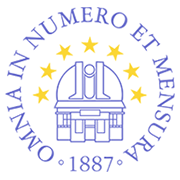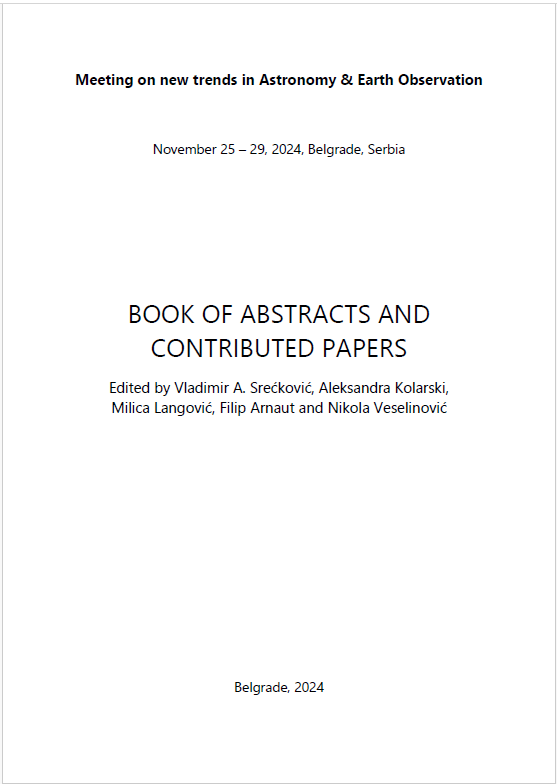ORBITAL PRECESSION OF S-STARS IN YUKAWA-LIKE GRAVITY: CASE OF BULK MASS DISTRIBUTION
Vesna Borka Jovanović, Duško Borka, Alexander F. Zakharov, Predrag Jovanović.
Publication
BOOK OF ABSTRACTS AND CONTRIBUTED PAPERS - International scientific conference: Meeting on new trends in Astronomy & Earth Observation, Page 75-77, https://doi.org/10.69646/aob241224
BOOK OF ABSTRACTS AND CONTRIBUTED PAPERS - International scientific conference: Meeting on new trends in Astronomy & Earth Observation, November 25-29, 2024, Belgrade, Serbia, Edited by Vladimir A. Srećković, Aleksandra Kolarski, Milica Langović, Filip Arnaut and Nikola Veselinović
Published by: Scientific Society Isaac Newton Belgrade
Published: 15. 12. 2024.
Abstract
Abstract: In this study we use a Yukawa-like correction of the Newtonian gravitational potential, proposed by C. Will (see Ref. Jovanović et al. 2024a) in order to obtain new bounds on graviton mass from the observed orbits of S-stars around Sgr A*, but taking into account bulk mass distribution (Jovanović et al. 2021). Orbital precession of investigated stars is influenced by other stars, gas and dark matter and it is expected that the stars represent the dominant component of the extended galactic mass distribution near the Sgr A*. We adopted a double power-law density profile of the bulk distribution of mass around supermassive black hole (SMBH) in the central regions of our galaxy. We also assumed that the orbital precession of S-stars is close to the prediction of General Relativity (GRAVITY Collaboration in 2020 and 2022) for Schwarzschild precession, but with a possible small discrepancy from it. By comparison of the observed orbits of bright stars (Gillessen et al. 2017) in the Galactic center with their simulated orbits in Yukawa-like gravitational potential, we estimated the constraints on the parameters of this Yukawa-like theory of gravity. Assuming that λrepresents the graviton Compton wavelength, we also found the corresponding upper bound of graviton mass. We also evaluated the parameters of the Yukawa-like gravity model in the case of different values of bulk mass density distribution of extended matter. The obtained results were then compared with our previous estimates (Jovanović et al. 2023, Jovanović et al. 2024b), as well as with the estimates of other authors. Also, obtained results are in a good agreement with the corresponding LIGO results. We believe that proposed method is a useful tool to evaluate parameters of the gravitational potential at the Galactic Center.
- FULL TEXT available in PDF.




